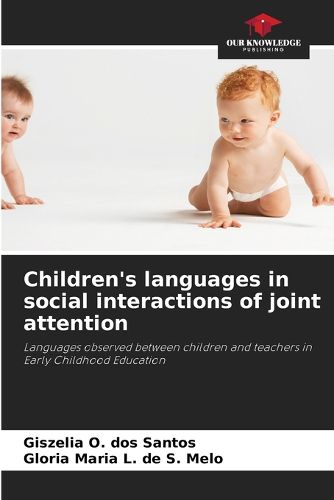Readings Newsletter
Become a Readings Member to make your shopping experience even easier.
Sign in or sign up for free!
You’re not far away from qualifying for FREE standard shipping within Australia
You’ve qualified for FREE standard shipping within Australia
The cart is loading…






In this study, we discuss the languages used/expressed/communicated by children attending Early Childhood Education institutions, in contexts of social interactions of joint attention. This is a longitudinal study of a qualitative nature, resulting from one of the investigative focuses of a PIBIC project (2016/2017 quota) developed by UEPB/Brazil. The subjects involved were 30 children aged between 02 and 03 years old and 02 teachers. We start from the understanding that children have multiple languages, and that the school environment can favor the use of this multiplicity. The study showed, among other things, that it is possible to identify multiple languages in the interactions between adults and children, and between the children themselves, in contexts of joint attention, in the social spaces of the nursery school; and that the other (adult or child) has important contributions in stimulating the use of languages by children, from an early age.
$9.00 standard shipping within Australia
FREE standard shipping within Australia for orders over $100.00
Express & International shipping calculated at checkout
In this study, we discuss the languages used/expressed/communicated by children attending Early Childhood Education institutions, in contexts of social interactions of joint attention. This is a longitudinal study of a qualitative nature, resulting from one of the investigative focuses of a PIBIC project (2016/2017 quota) developed by UEPB/Brazil. The subjects involved were 30 children aged between 02 and 03 years old and 02 teachers. We start from the understanding that children have multiple languages, and that the school environment can favor the use of this multiplicity. The study showed, among other things, that it is possible to identify multiple languages in the interactions between adults and children, and between the children themselves, in contexts of joint attention, in the social spaces of the nursery school; and that the other (adult or child) has important contributions in stimulating the use of languages by children, from an early age.